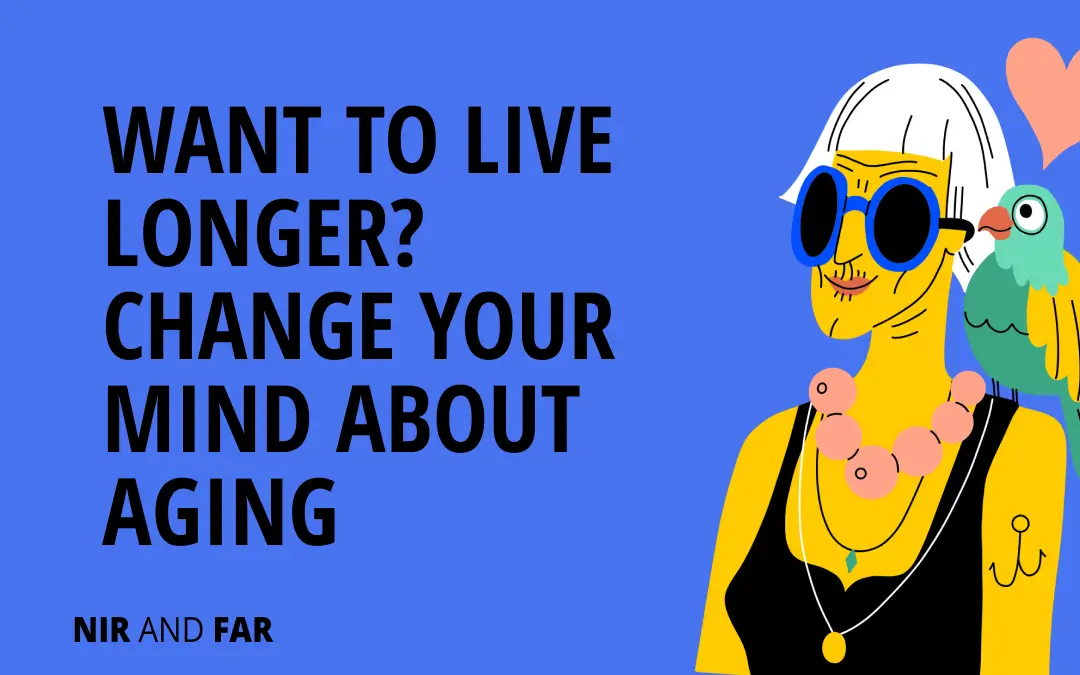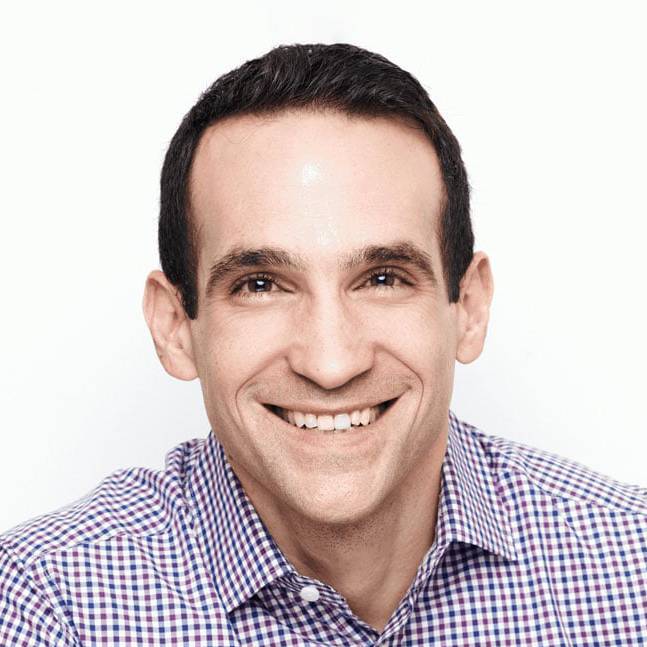If we think life is over in old age, it will be.
There is no shortage of supposed methods for increasing lifespan. Typing in “longevity” into Amazon reveals over 40,000 books on the topic. Each author purports their own cure, typically involving a special diet, miracle supplement, or painful practice.
What’s usually left out is how much extra life one can expect to gain by following these often difficult, frequently expensive, and rarely scientifically-backed routines.
Take the latest fitness fad: immersing yourself in icy water. Though endless gurus tout its benefits, not a single long-term study shows that freezing yourself adds even one day to your lifespan. Even well-established nutritional darlings, like the Mediterranean diet, which have been extensively studied, perhaps increase lifespan by four and a half years or so.
However, there is one often overlooked factor that studies have found increases lifespan by seven years or more. It’s painless, costs nothing, and doesn’t require the advice of a doctor or online fitness influencer.
Perception Is Reality
A 2002 study published in the Journal of Personality and Social Psychology and a similar study published in 2009 in Psychological Science found that thinking positively about aging profoundly affects lifespan.
In the first study, researchers followed 1,157 participants for nearly 23 years. The participants, all over 50 years old, were asked how much they agreed with statements related to aging, such as:
– Things keep getting worse as I get older.
– I am as happy now as I was when I was younger.
– As you get older, you are less useful.
To isolate the effect of the perception of aging, the researchers added questions about other factors that could impact longevity, such as race, gender, socioeconomic status, how healthy the participants felt, and how lonely they were.
With the survey data collected, the researchers meticulously tracked when participants died using the National Death Index.
As the results came in year after year, a clear gap emerged. Participants with high “positive self-perceptions of aging” died later than those with negative views. By the time the study concluded over two decades later, those with a positive view of aging had taken over seven and a half years longer to reach the same probability of dying as those with a negative view.
Perception seemed to shape reality. But how?
The Will to Live
The same study authors proposed that a strong “will to live,” defined as “a judgment that the perceived benefits of one’s life outweigh the perceived hardships,” was the source of the longevity increase. That is, people live longer when they have a compelling reason to stay alive.
But can people actually influence how long they live just by their thoughts? The idea might not be as far-fetched as it first sounds.
Many people seem to influence when they die. John Adams, Thomas Jefferson, and James Monroe, the second, third, and fourth American presidents, (un)coincidentally all died on the fourth of July. Many of us know a family member who held on to life until their spouse or children arrived at the hospital, then passed shortly after. We call it a miracle, but maybe there’s more to it.
If we can extend our lives because of a stronger will to live, such as holding on to life until Independence Day or until a loved one arrives, it’s not out of the question that our thoughts can extend our lives for years.
How Do Our Beliefs Influence Longevity?
If my father had one catchphrase, it would be, “This was the best
Of course, I can attest that many experiences my father called the “best ever!” were anything but. A family trip to Guatemala was a disaster (relentless mosquitos, losing our tour guide, a sleet storm on a volcano, and a near-mugging). Still, in his head, it couldn’t have been better.
There is a significant benefit of having a positive outlook: When you think you can do something, you attempt it. Even if you fail, your chances of success are greater than those who think they can’t do something and don’t try. People who think they are too old to exercise or go to a concert, don’t. People who think they have no control over their lifespan, forfeit it.
A 2019 meta-analysis of 15 studies involving 229,391 participants conducted by Alan Rozanski, a cardiologist at Mount Sinai St. Luke’s Hospital in New York, also shows the profound influence of mindset on longevity. It indicated a strong relationship between optimism and decreased risk of cardiovascular events like heart attacks and a lower mortality rate.
As Lewina O. Lee, an assistant professor of psychiatry at Boston University School of Medicine, told The New York Times, optimists “reframe challenging circumstances” better than pessimists and aren’t as stressed by them. Optimists also “embrace a can-do attitude toward life and persist in trying to overcome obstacles” more than pessimists.
How to think differently about aging…
Society—at least in many Western societies—is not kind to older people. Our culture is filled with anti-aging messages and negative stereotypes about the elderly. Magazines feature beautiful young people in fashionable clothing. Makeup ads boast that their products make wrinkles disappear.
Some societies perpetuate false negative beliefs, such as that cognition declines as we age, which science shows is not a rule: Procedural memory (like knowing how to ride a bike) and the ability to solve problems or memorize vocabulary improve with age, according to Becca Levy, a professor of Public Health and Psychology at Yale Institute for Global Health (who also led the 2002 and 2009 studies mentioned above).
So it’s no surprise that our inner critic tells us, “You’re too old to do that or wear that,” or “Those days are behind you.” But labeling oneself as “too old” shapes how we see ourselves and, therefore, our reality. We can reverse those negative beliefs to be positive and harness them to live longer.
First, recognize anti-aging messages, thoughts, and beliefs.
Levy recommends keeping an age-belief journal for one week to increase our awareness of them so we can then reframe them:
- Write down every message about aging that you encounter, from TV shows you watch to a magazine you read or a conversation you overhear.
- Write down when you notice older people are absent from a TV show or activity. Note whether the message is positive or negative.
- Imagine how a negative message could have been positive. For example, an old curmudgeon and recluse on a TV show could transform into a sagacious, social neighbor who shares wisdom. Write it down!
The journal initiates cognitive restructuring, a technique used in cognitive behavioral therapy to help people identify and then modify, or reframe, their self-defeating beliefs.
Reframe negative thoughts about getting older.
We can use cognitive behavioral tactics to master negative thoughts. Over time, we build a habit of reframing negative thoughts as positive ones.
“Our thinking is habitual, not conscious, so the first step is to learn to catch yourself when thinking negatively and make a commitment to change how you look at things,” Rozanski told The New York Times. “Recognize that the way you’re thinking is not necessarily the only way to think about a situation. Just that thought alone can decrease the toxic effect of negativity. Step two is to substitute a better thought that is credible.”
As we age, we become familiar with losing the physical capabilities we once had. Don’t ruminate on it. Focus on what you can do, not what you can’t.
In a podcast, professional skateboarder Tony Hawk talks about how his relationship to skateboarding has changed since he started in the ’90s, and it’s an excellent example of positive reframing:
I broke my femur last year, and that taught me that I don’t have to go as hard as I used to, that I can still enjoy this on a lower level than what I was doing even three or four years ago, and that I can do it casually and enjoy it just as much. It’s also a great thing to share with my kids and a new generation. – Tony Hawk
Find positive aging role models.
Some octogenarians run marathons after starting to run later in life. Frank McCourt was 66 when he published his first book, Angela’s Ashes, and it won a Pulitzer; Laura Ingalls Wilder published her first book, the beginning of the Little House on the Prairie series, when she was 65. People who had incredible accomplishments later in life are a strong argument that life after youth offers lots of opportunity too.
One recent study found that social interaction between older adults and both young people and other older adults improved views of age for all parties. In particular, older adults exposed to other older adults and a range of aging experiences diversified their views of aging in others and themselves.
Exposing yourself to positive aging role models can show different ways of aging—many positive.
Set goals for growth and purpose.
Goal setting shifts our focus from what we lose with age to what we might gain. It encourages us to be excited about the future rather than dwell on the past. Achieving goals also reminds us that we can still learn, grow, and have purpose as older adults.
Working toward a goal also allows people to maintain a sense of control in old age, when they typically feel they are losing control—over their bodies, their place in society, and even their rights and autonomy.
When you start a new routine, use my free habit tracker to record each time you complete it. For example, if you want to learn a language by practicing for 30 minutes every day, mark an X in the tracker each time you do. Visualizing your progress and determination over time will boost your confidence, sense of agency, and motivation. The positive reinforcement will help you not only continue the routine to meet your goal but also understand that aging doesn’t equate to stagnation.
Developing new habits and interests might also inspire you to seek connections with others who share the same interests, thereby expanding your network of relationships.
While more research is needed to understand exactly how far mindset can take us in life, science shows a clear connection between mindset and longevity. So, this is your sign to believe that you do have control over how long you live.
If we think our lives are over in old age, they will be.
Free Habit Tracker
Design your ideal day and build your best life.
Your email address is safe. I don't do the spam thing. Unsubscribe anytime. Privacy Policy.
Related Articles
- Schedule Maker: a Google Sheet to Plan Your Week
- Habit Tracker Template in Google Sheets
- The Ultimate Core Values List: Your Guide to Personal Growth
- Timeboxing: Why It Works and How to Get Started in 2024
- An Illustrated Guide to the 4 Types of Liars
- Hyperbolic Discounting: Why You Make Terrible Life Choices
- Happiness Hack: This One Ritual Made Me Much Happier

